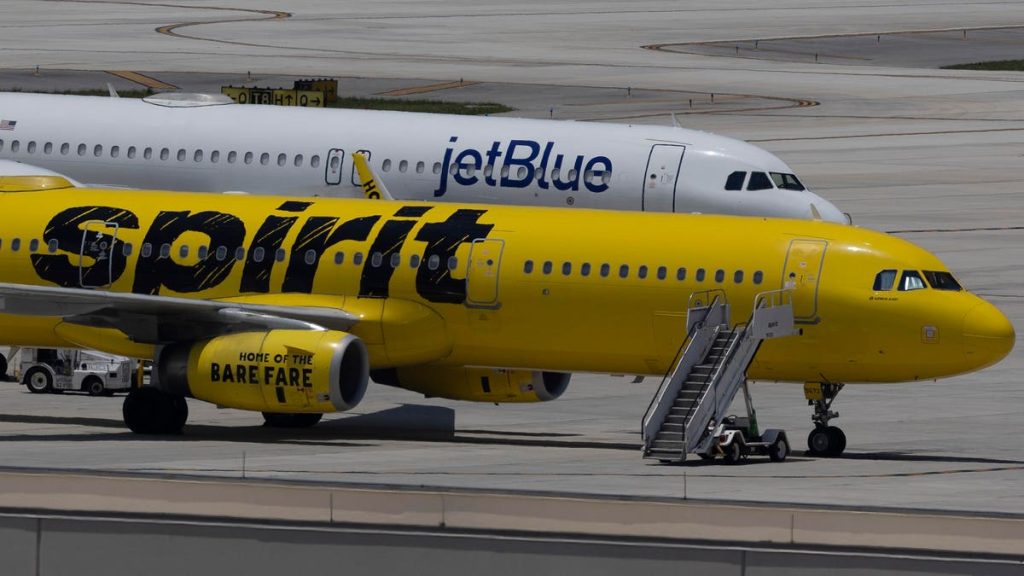In a private lawsuit challenging JetBlue’s proposed merger with Spirit Airlines, the plaintiffs have filed documentation with the court suggesting that the combined airline would increase fares could by 24 to 40%. This revelation came from documents that were improperly redacted before being published.
The released information would appear to support the plaintiff’s argument that the merger would reduce competition and increase prices. Their suit is in addition to one from the Department of Justice that seeks to block the merger on antitrust grounds.
Another Revelation: More Comfort
It would be wrong to assume that the increases, if true, merely represent a greedy corporation using monopoly pricing power to extract more cash from travelers. Another part of the document reveals that the plan calls for JetBlue to remove 24 seats from Spirit’s aircraft. This is no small change.
Common Spirit configurations for their Airbus aircraft have about 175 economy seats. Notably, the standard for Spirit is a seat pitch of 28 inches. SeatGuru, a site that reviews airline seats, does not rate any Spirit seat as “good” or even “standard.” All are either “bad” or “be aware,” a designation that cautions about seat pitch and lack of ability to recline.
JetBlue, in contrast, is known for ample seating. Only a handful of seats come with warnings at SeatGuru, typically those near exits, lavatories, or the rear bulkhead. Even the cheapest seats on JetBlue offer a pitch of 32 to 35 inches, 4 to 8 inches more than Spirit. Some JetBlue seats offer 37 to 41 inches of seat pitch.
Bucking the Trend
It seems that every airline is trying to cram more seats into every plane, with economy flyers bearing the brunt of the discomfort. More seats translate into more revenue. The idea that an airline would acquire aircraft with very dense seating plans and actually rip out a significant number of those seats is unheard of.
While the documents don’t provide seating details, a rough calculation suggests that removing 24 seats on common Spirit configurations would result in about 15% more space per passenger – a seat pitch of about 32 inches, the lower end of JetBlue’s typical range.
Four more inches of legroom would add significantly to the level of comfort, and might allow seats that actually recline. Reclining one’s seat in economy class can be controversial, but having the option to do so when circumstances permit would be appreciated by most travelers.
Spirit: Worst for Customer Experience
The American Customer Satisfaction Index ranks airlines based on surveys completed by thousands of passengers. Spirit Airlines finished last among U.S. airlines with a rating of 64. JetBlue earned a rating of 76, just a point behind Delta and United. American and Southwest scored 78, putting all five in a tight grouping.
From a customer experience standpoint, the merger seems to be a no-brainer. A well-liked brand is going to take over the airline with the worst passenger experience and make substantive changes to improve that experience. Ripping out a couple of dozen seats isn’t window dressing, it’s a serious commitment to better passenger comfort.
Arguably, airlines like Spirit and oft-reviled Frontier drive a race to the bottom for all U.S. airlines. In seeking to match discount airline prices, the major U.S. airlines have stripped amenities from their basic products at the same time as they squeeze more seats into the back of the plane.
The Price vs. Experience Dilemma
I’m almost always critical of actions by airlines that reduce passenger comfort and make previously included amenities an extra cost option. That’s the fundamental business model of Spirit Airlines.
The lawsuits aimed at blocking the merger are focused mainly on pricing. They allege that prices will rise after the merger. They don’t specifically take into account the value of a better experience. The plaintiffs and the DOJ don’t concern themselves about issues like whether seats are uncomfortable or if flyers dislike Spirit more than any of the other airlines.
That’s the dilemma: there are many flyers willing to tolerate the sub-par Spirit experience because their prices are low. Even if JetBlue taking over Spirit would measurably improve customer experience, how does one weigh that against cheaper prices when considering the public interest?
That’s not an easy question to answer. Even though budget airlines have been a driver of a degradation of basic service industry-wide, they provide a service attractive to a price-sensitive segment of U.S. flyers. And, there’s no indication that eliminating Spirit would reverse the trend of tighter seating and fewer amenities.
If JetBlue’s Strategy Works
If the merger does go through we’ll have an interesting case study.
If the merged airline thrives while offering a more customer-focused experience than what Spirit offered, it will empower other airlines to improve their basic experience.
Read the full article here









